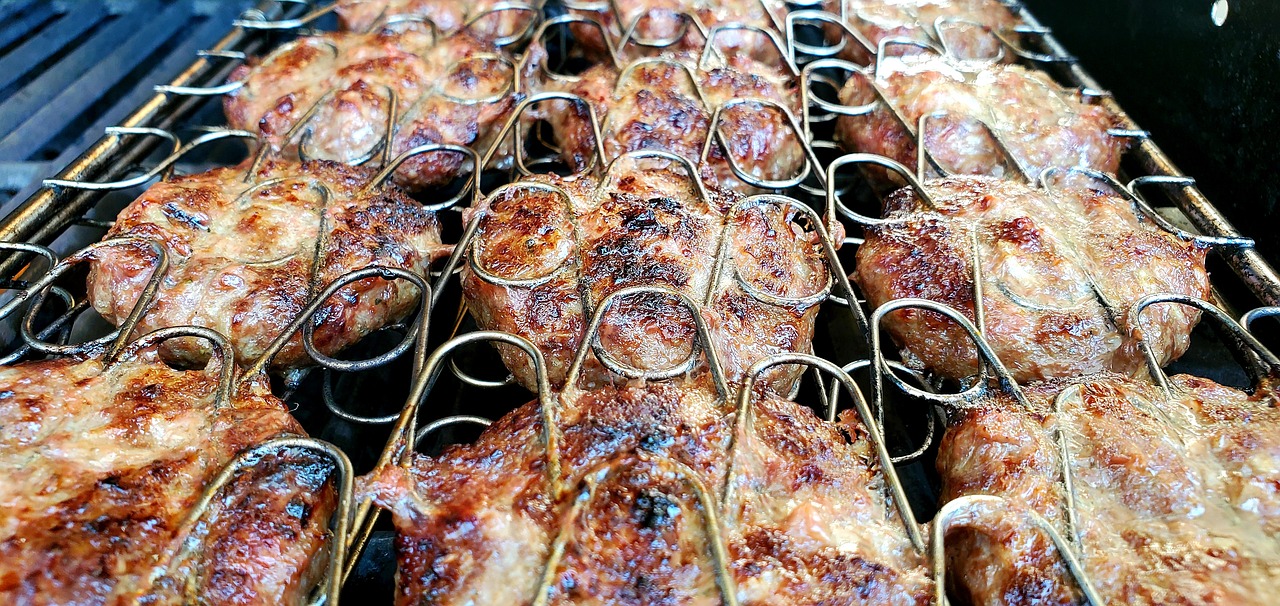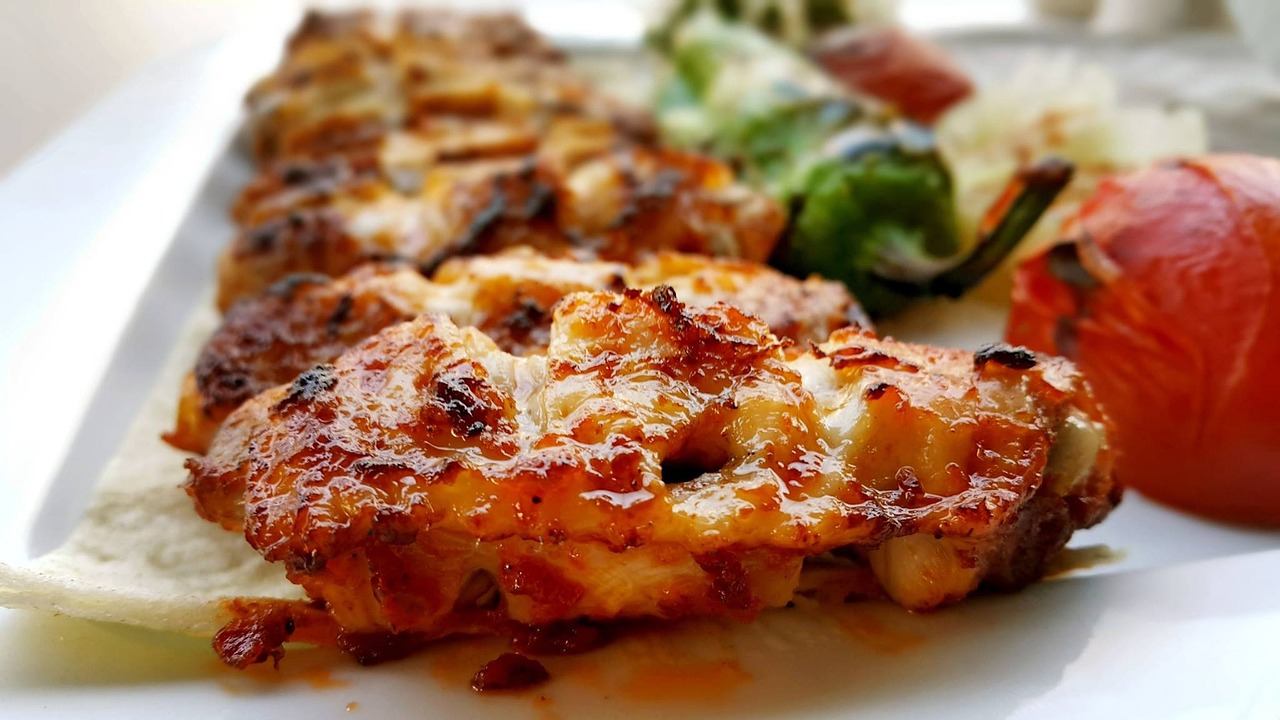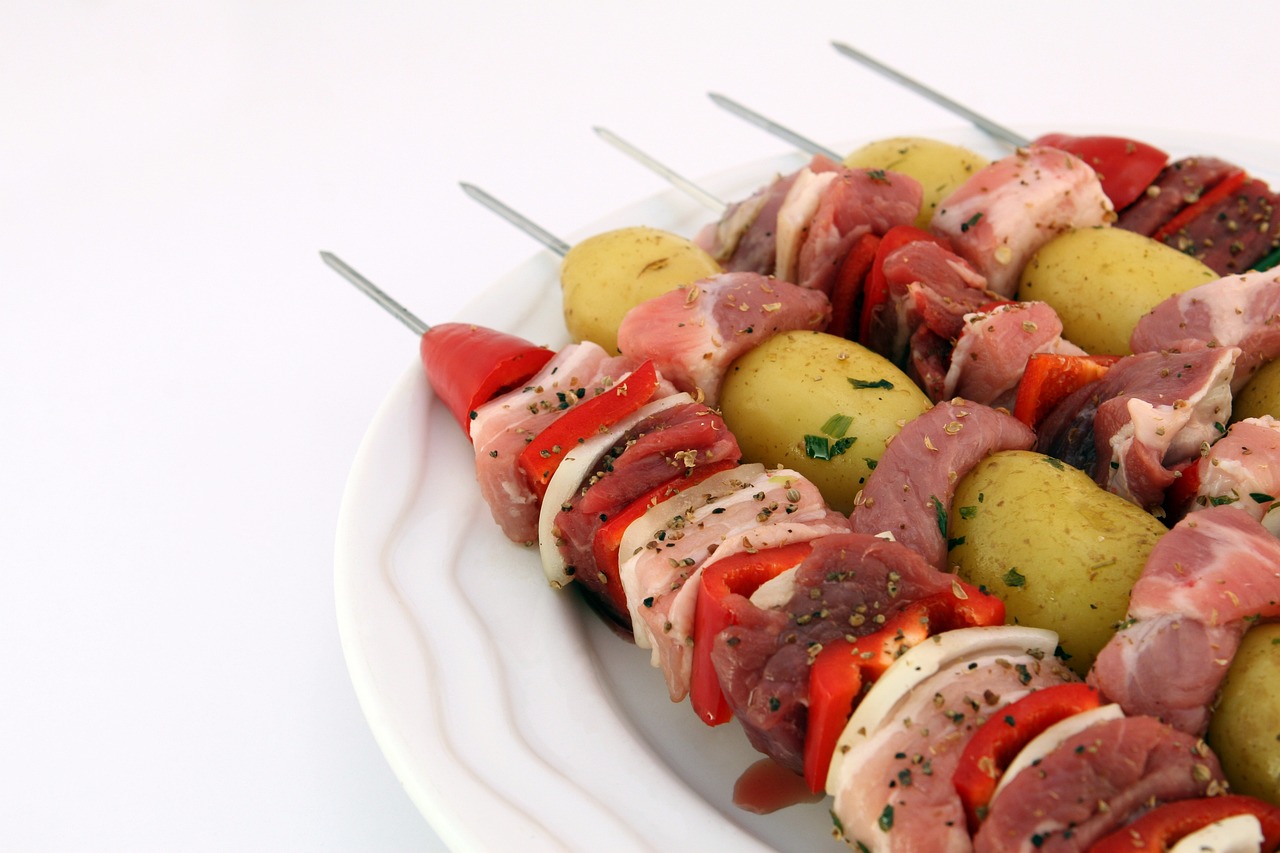Classic Turkish Meatball Burger: Fusion of Local Flavors

Exploring the delicious combination of traditional Turkish meatballs with a modern twist in a burger form is like embarking on a culinary adventure where surprise and explosion of flavors await at every bite. Imagine the rich, savory taste of köfte nestled between soft burger buns, creating a fusion of local flavors that is both comforting and exciting.
As we delve into the world of the Classic Turkish Meatball Burger, we uncover a story of tradition meeting innovation, where heritage recipes are reimagined to cater to the evolving palates of today. The marriage of old and new in this dish is a testament to the timelessness of Turkish cuisine, where flavors transcend generations.
Picture a juicy meatball infused with aromatic spices, grilled to perfection, and served with a medley of fresh vegetables and creamy sauces. The juxtaposition of textures and tastes in each bite is a symphony for the senses, a harmonious blend of flavors that dance on your taste buds.
With each bite of the Classic Turkish Meatball Burger, you are transported to the bustling streets of Istanbul, where the aroma of sizzling meatballs fills the air, and the sound of vendors calling out to passersby creates a lively atmosphere. It's a culinary journey that captures the essence of Turkish hospitality and culinary mastery.
Whether enjoyed as a quick street food snack or as a centerpiece of a hearty meal, the Classic Turkish Meatball Burger offers a versatile dining experience that caters to all occasions. Its ability to adapt to different settings while maintaining its authentic flavors is a testament to the versatility and universal appeal of Turkish cuisine.
Origin of Turkish Meatballs
The origin of Turkish meatballs, known as köfte, dates back centuries and is deeply rooted in the rich culinary history of Turkey. These flavorful meatballs have been a staple in Turkish cuisine for generations, cherished for their delicious taste and cultural significance.
Legend has it that Turkish meatballs were first created by nomadic tribes who seasoned and shaped meat into small balls for easy cooking during long journeys. Over time, this simple yet ingenious recipe evolved, incorporating a variety of spices and herbs to enhance the flavor profile.
Today, Turkish meatballs are a symbol of hospitality and togetherness, often enjoyed during family gatherings, celebrations, and special occasions. The art of making köfte has been passed down through generations, with each family adding its unique touch to the recipe.
The preparation of Turkish meatballs involves a meticulous process of mixing high-quality minced meat with a blend of spices such as cumin, paprika, and parsley. The meat mixture is then shaped into small patties or elongated shapes before being grilled or pan-fried to perfection.
Each region in Turkey has its own variation of köfte, with different ingredients and cooking methods that reflect the local culinary traditions. From Adana köfte with its spicy kick to İzmir köfte with a hint of citrus, Turkish meatballs offer a diverse range of flavors to tantalize the taste buds.
köfte,
When it comes to Turkish cuisine, one cannot overlook the iconic dish of köfte. These flavorful meatballs hold a special place in the hearts of Turks and food enthusiasts worldwide. Köfte, which translates to meatball in English, is more than just a dish—it is a symbol of tradition, community, and culinary artistry.
Originating from the rich culinary heritage of Turkey, köfte has a history that dates back centuries. These savory meatballs were initially crafted as a way to preserve meat by mixing it with spices and shaping it into small, round patties. Over time, köfte became a staple food in Turkish households and a central component of celebratory feasts and gatherings.
The art of making köfte involves a meticulous process that requires skill and patience. Ground meat, typically lamb or beef, is mixed with onions, garlic, breadcrumbs, and a blend of aromatic spices such as cumin, paprika, and mint. The mixture is then kneaded by hand to ensure proper seasoning and consistency before being shaped into small, oval patties.
To enhance the flavors and textures of köfte, the meatballs are traditionally grilled over an open flame or cooked in a cast-iron skillet, allowing them to develop a smoky charred exterior while remaining juicy and tender on the inside. The aroma of sizzling köfte wafting through the air is enough to make anyone's mouth water.
Whether enjoyed on its own, paired with fluffy rice pilaf, or tucked into a warm pita with fresh vegetables and tangy yogurt sauce, köfte offers a versatile dining experience that caters to a variety of tastes and preferences. Each bite of these succulent meatballs is a burst of flavor that transports you to the bustling streets of Istanbul or the cozy kitchens of Anatolia.
As köfte continues to evolve and adapt to modern palates, chefs and home cooks are experimenting with new ingredients and techniques to create innovative variations of this classic dish. From spicy lamb köfte infused with Middle Eastern spices to vegetarian versions made with lentils and bulgur, the possibilities are endless.
Whether you're a seasoned köfte enthusiast or a newcomer to Turkish cuisine, exploring the world of köfte is a culinary journey filled with surprises and explosions of flavor. So, why not embark on a gastronomic adventure and savor the delightful taste of köfte in all its traditional and modern forms?and how they have evolved over time to become a beloved staple in Turkish cuisine.
The history of Turkish meatballs, or köfte, dates back centuries and is deeply rooted in Turkish culinary traditions. Originally crafted as a simple dish of ground meat mixed with spices and herbs, köfte has evolved over time to become a beloved staple in Turkish cuisine. The evolution of Turkish meatballs reflects the rich cultural tapestry of Turkey, with each region adding its own unique twist to the recipe.
One of the key factors in the evolution of Turkish meatballs is the influence of various civilizations that have passed through the region over the centuries. From the Ottoman Empire to the Byzantine Empire, each era has left its mark on the culinary landscape of Turkey, contributing to the diverse flavors and cooking techniques found in Turkish meatball recipes today.
As Turkish cuisine continued to develop and innovate, so did the preparation methods for köfte. While the basic concept of mixing ground meat with spices remains the same, different regions of Turkey have introduced their own variations, incorporating local ingredients and cooking styles to create a wide range of köfte varieties.
Today, Turkish meatballs are enjoyed not only in traditional dishes but also in modern interpretations that cater to contemporary tastes. Whether grilled, fried, or stewed, köfte continues to be a versatile dish that can be found in homes, restaurants, and street food stalls across Turkey.
With its enduring popularity and adaptability, Turkish meatballs have truly stood the test of time to become a beloved staple in Turkish cuisine. The evolution of köfte showcases the dynamic nature of Turkish culinary traditions, where old meets new to create a harmonious blend of flavors that captivate the senses and celebrate the rich heritage of Turkish gastronomy.
Ingredients and Preparation
When it comes to crafting a classic Turkish meatball burger, the key lies in the carefully selected ingredients and the traditional methods of preparation that bring out the rich flavors and textures of this iconic dish. Let's delve into the essential components that make up this mouthwatering creation:
- Ground Meat: The star of the show, a blend of high-quality ground beef and lamb is typically used to form the base of the meatballs. This combination adds depth of flavor and juiciness to the final burger.
- Onion and Garlic: Finely chopped onions and garlic are sautéed to golden perfection before being mixed into the meat mixture. These aromatic ingredients infuse the meatballs with a savory and fragrant essence.
- Spices: A medley of traditional Turkish spices such as cumin, paprika, and oregano are added to the meat mixture, providing a burst of warm and earthy flavors that are characteristic of Turkish cuisine.
- Bread Crumbs: To bind the ingredients together and add a light, airy texture to the meatballs, breadcrumbs soaked in milk are incorporated into the mixture. This ensures a tender and moist final product.
- Egg: A beaten egg is added to the mixture as a binding agent, helping to hold the meatballs together and maintain their shape during cooking.
Once the ingredients are combined, the meat mixture is shaped into round patties and either grilled or pan-fried to perfection. The meatballs are then nestled in a soft burger bun, topped with fresh lettuce, tomatoes, and a dollop of creamy yogurt sauce for a harmonious blend of flavors and textures.
The preparation of a classic Turkish meatball burger is a labor of love, with each step carefully executed to ensure a delightful culinary experience that captures the essence of Turkish cuisine. Whether enjoyed at a bustling street food vendor or a cozy family dinner, this fusion of local flavors promises a satisfying and memorable meal that celebrates tradition with a modern twist.
Modern Twists and Variations
When it comes to modern twists and variations on the classic Turkish meatball burger, chefs and home cooks alike are pushing the boundaries of creativity to deliver exciting new flavors and textures. Let's dive into some innovative ways in which this traditional dish is being reimagined:
- Fusion Ingredients: Some culinary enthusiasts are experimenting with fusion ingredients, combining traditional Turkish spices with global flavors to create a unique taste sensation.
- Vegetarian Options: In response to the growing demand for plant-based dishes, chefs are developing vegetarian versions of the Turkish meatball burger using ingredients like lentils, chickpeas, or mushrooms.
- Mini Meatball Sliders: A playful take on the classic burger, mini meatball sliders are gaining popularity, offering bite-sized portions perfect for sharing or snacking.
- Spicy Variations: For those who enjoy a kick of heat, spicy variations of the Turkish meatball burger are emerging, incorporating chili peppers, hot sauces, or spicy marinades.
These modern twists and variations not only showcase the versatility of Turkish cuisine but also cater to evolving tastes and preferences in the culinary world. By blending tradition with innovation, chefs are able to captivate diners with unexpected flavor combinations and delightful surprises.
Serving Suggestions and Accompaniments
When it comes to serving the classic Turkish meatball burger, there are plenty of creative suggestions and accompaniments that can take your dining experience to the next level. Imagine a platter filled with vibrant colors and tantalizing aromas, ready to surprise your taste buds with explosions of flavor. Let's explore some delightful options to complement the rich and savory meatball burger:
- Fresh Salads: Pairing the meatball burger with a refreshing salad is a great way to balance out the hearty flavors. A crisp shepherd's salad or a zesty sumac onion salad can provide a burst of freshness with every bite.
- Savory Sauces: Elevate the taste profile of the meatball burger by drizzling it with a savory sauce. Consider serving it with a dollop of garlic yogurt sauce or a tangy pomegranate molasses glaze for an extra layer of flavor.
- Grilled Vegetables: Adding a side of grilled vegetables, such as charred eggplant or smoky peppers, can bring a delightful smokiness to the meal and provide a healthy contrast to the indulgent burger.
- Warm Flatbreads: Serve the meatball burger alongside warm and pillowy flatbreads, perfect for wrapping the juicy meatballs and accompaniments for a handheld feast. The soft texture of the bread complements the hearty flavors of the burger.
- Traditional Meze: For a truly authentic experience, consider offering a selection of traditional Turkish meze dishes as accompaniments. From hummus and babaganoush to stuffed grape leaves, these small plates can add a variety of flavors and textures to the meal.
By combining these serving suggestions and accompaniments, you can create a memorable dining experience that celebrates the fusion of local flavors in the classic Turkish meatball burger. Each element adds a unique touch to the meal, enhancing its overall appeal and providing a culinary journey that surprises and delights with every bite.



 HazalVardal
HazalVardal 





